Happy New Year! In Amami Oshima, there are two New Year celebrations. Similar to East Asian and Southeast Asian countries, the lunar calendar is deeply rooted among the people. In 2024, the lunar New Year fell on February 10th. I was invited by friends from a village and participated in mochitsuki (mochi pounding).
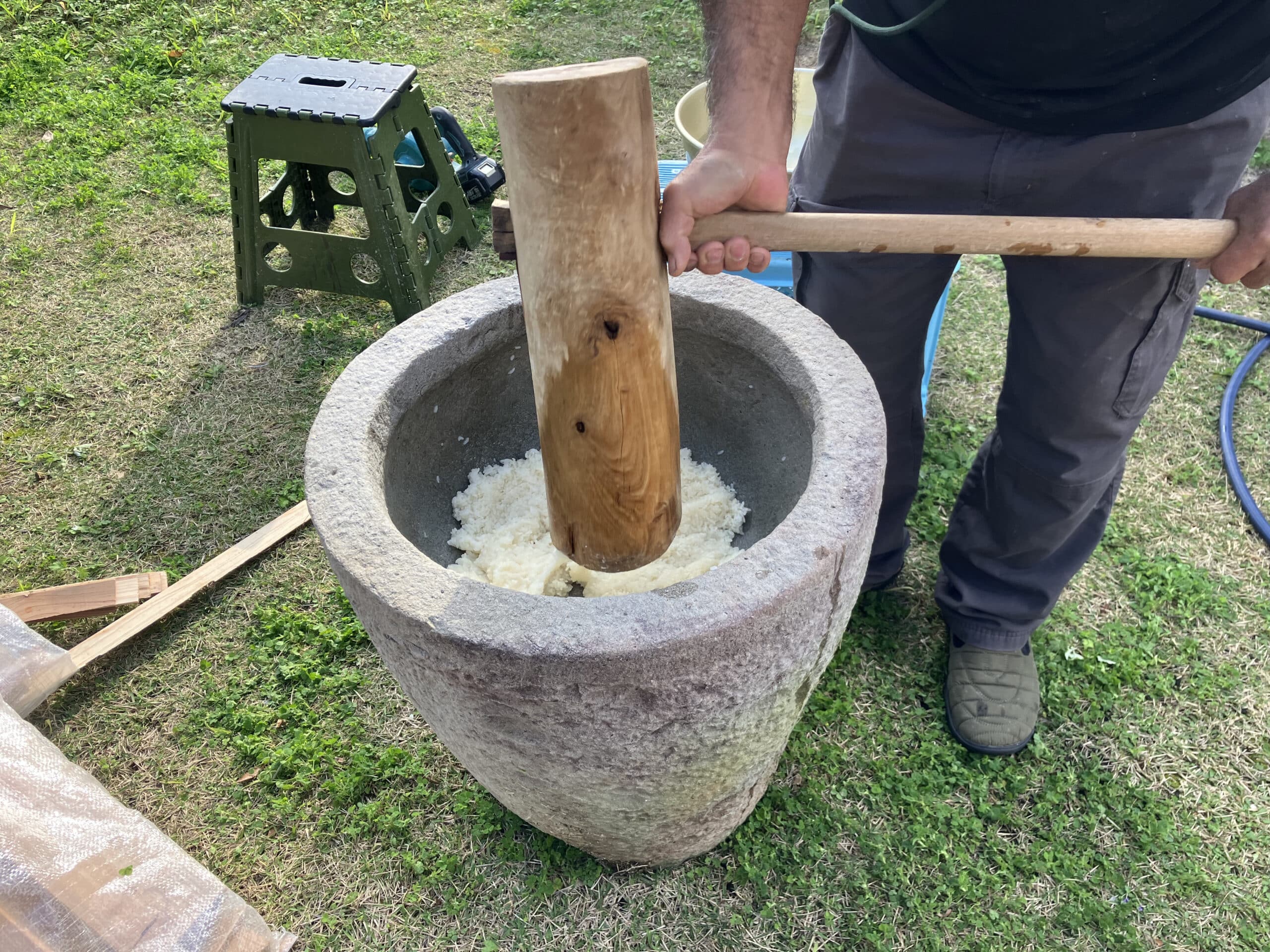
I felt a sense of nostalgia as I recently engaged in the traditional practice of mochitsuki, pounding rice to make mochi, back in my hometown. People use a stone mortar in Amami Oshima Island, unlike the wooden ones commonly used on the mainland. Additionally, pestles are larger than those found on the mainland.
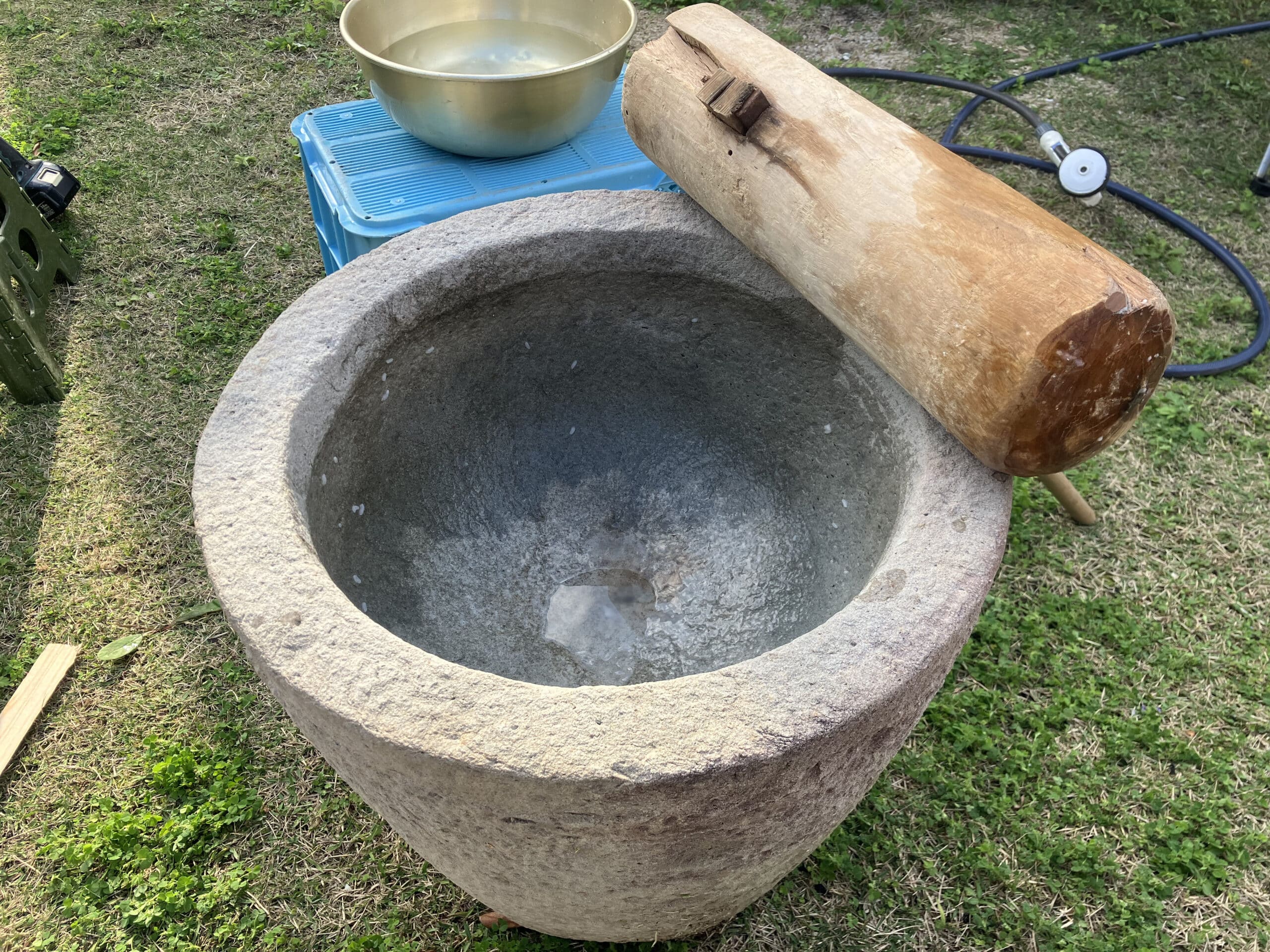
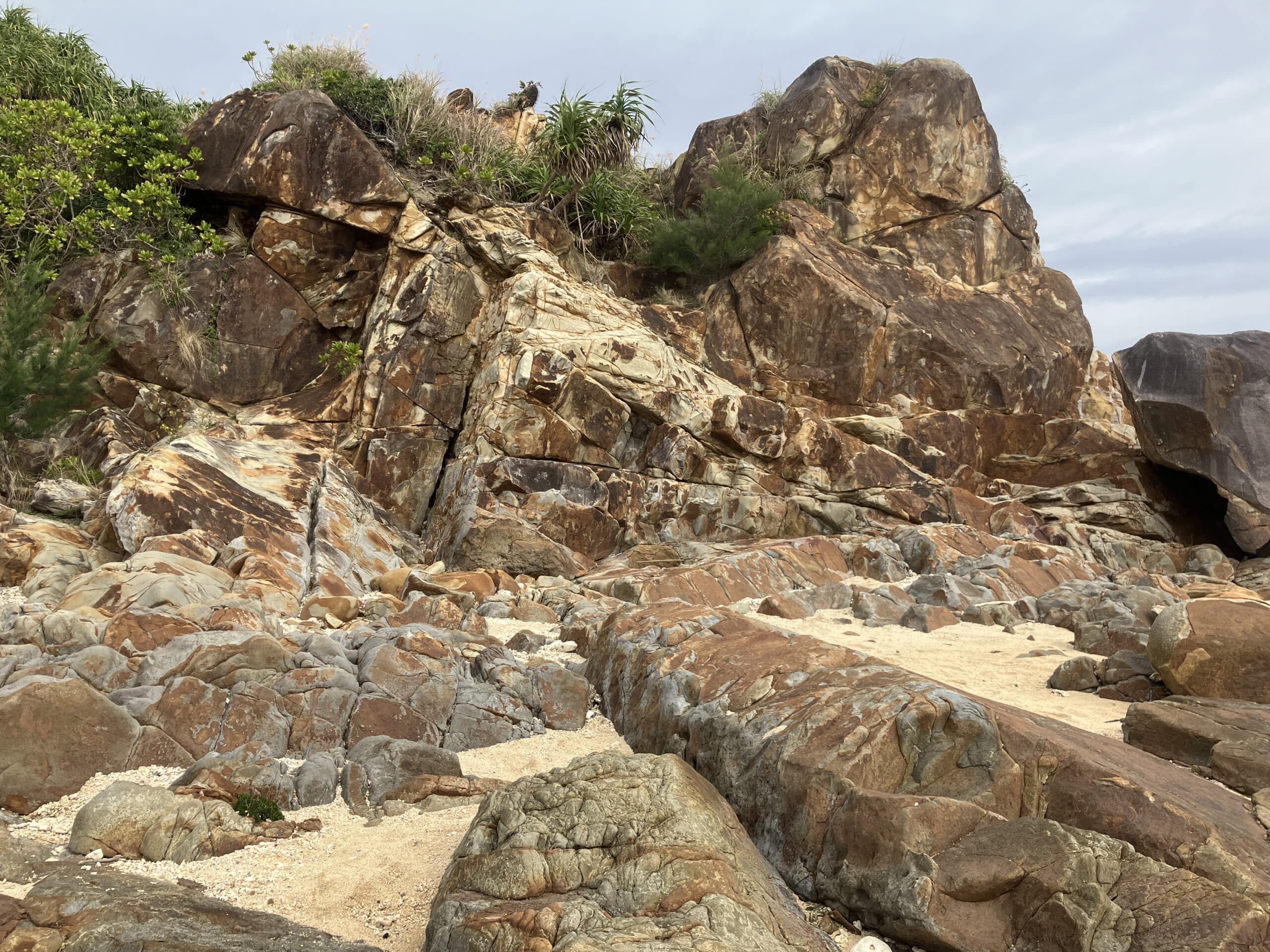
Mochitsuki requires physical strength, as the mochi won’t achieve the desired stickiness unless the pestle is swung with force. After energetically pounding 20 to 30 times, you find yourself catching your breath. To make one mochi, three to four people take turns pounding. It was a good workout!
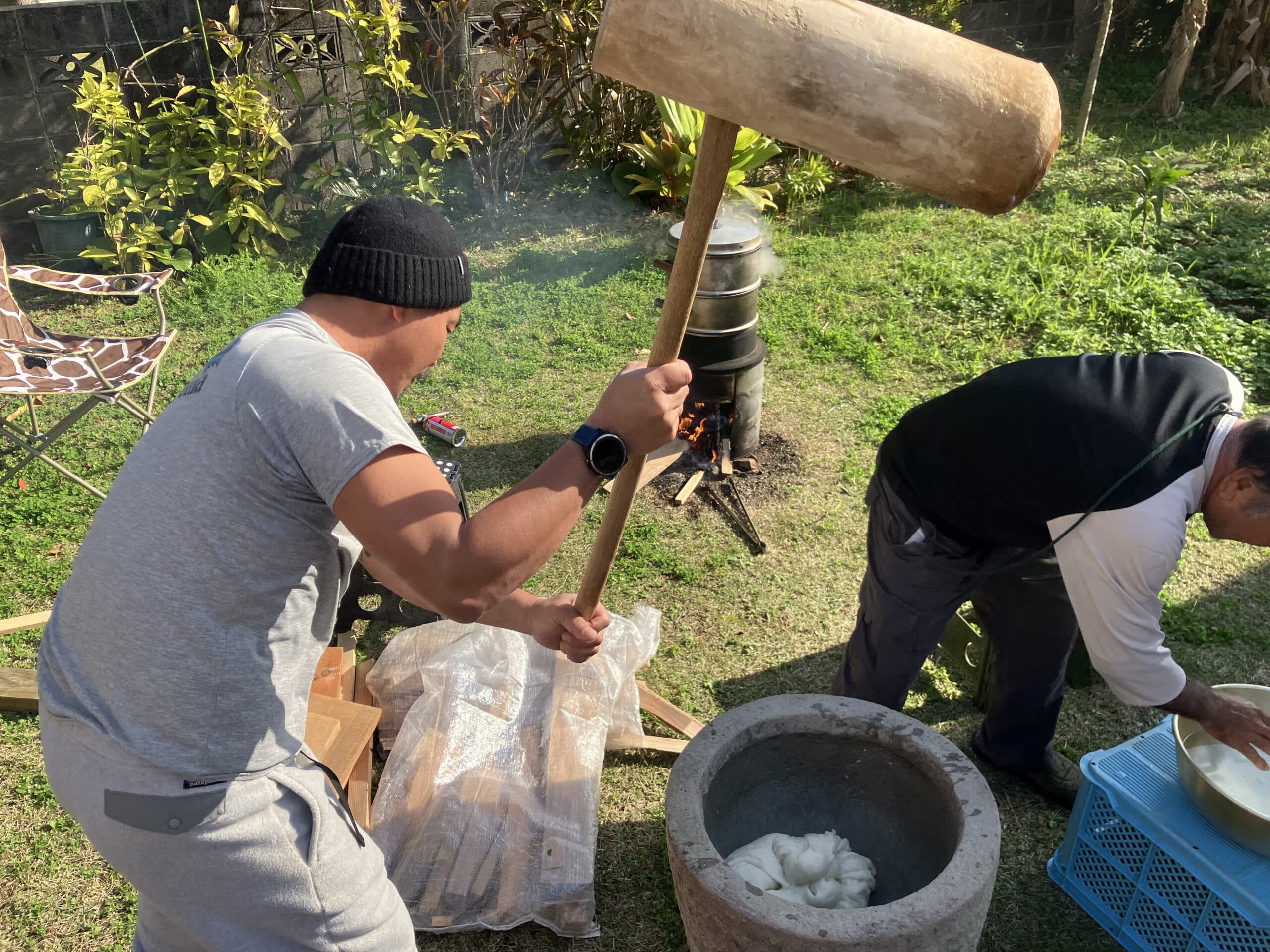
We repeated this process four times, each time working with 2.5 kilograms of rice. Given the physical demands, it’s an event that requires the collective effort of several adults.
The freshly pounded mochi was then shaped into rounds, with some filled with strawberries or sweet bean paste, and we enjoyed several on the spot. The taste of freshly made mochi was so delicious.
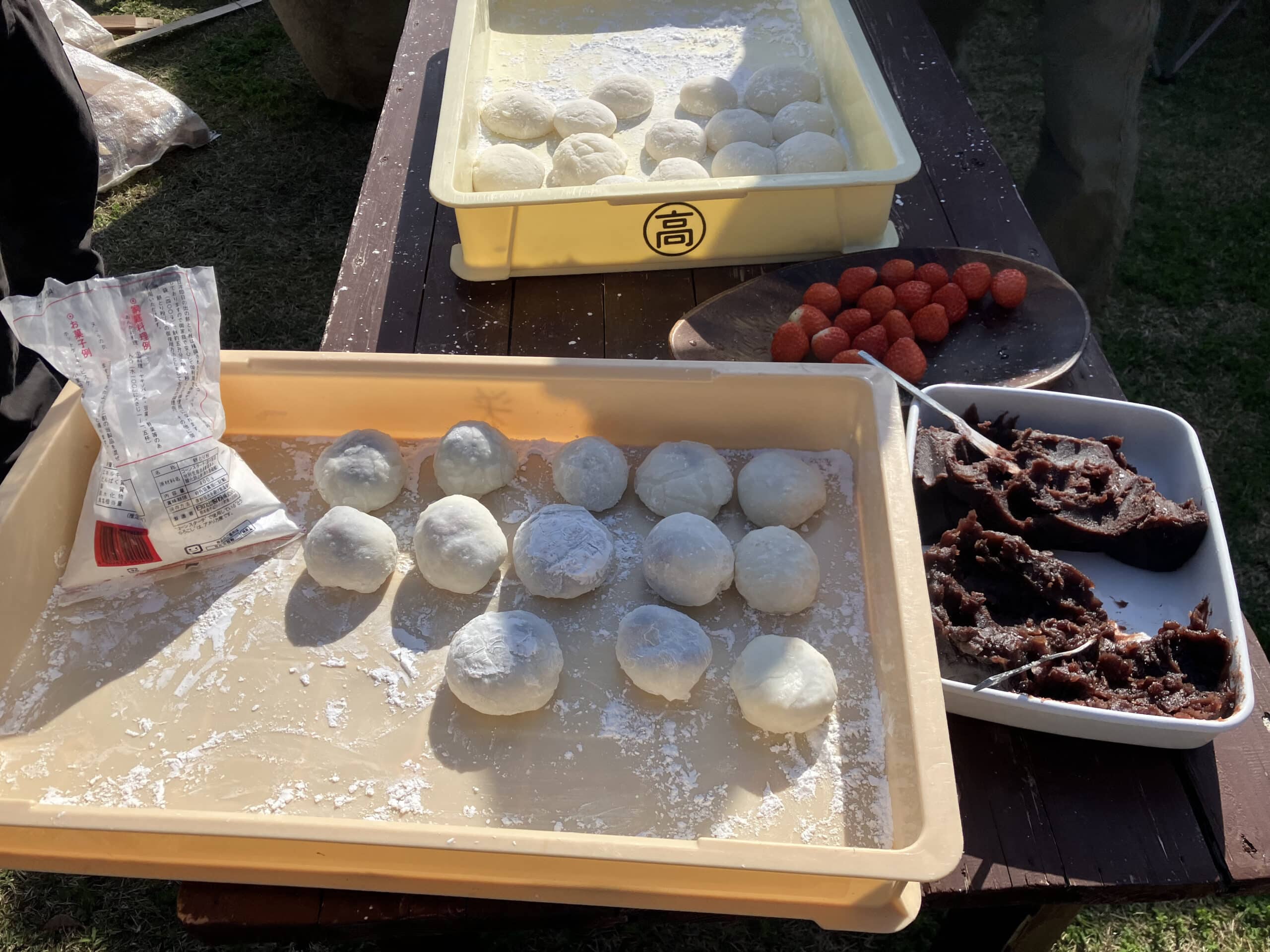
One notable aspect of mochitsuki is the sense of community. People from the neighborhood come together to pound mochi, and then people from children to the elderly, and even the family dog, come together and ramble on around the table of food. It’s a wonderful experience.
While mochitsuki used to be a widespread tradition throughout Japan several decades ago, like many cultural practices, it has significantly diminished in recent times. Factors such as machinery replacing manual labor and the declining interest of the younger generation in culture have contributed to this decline.
The potential loss of this culture is regrettable. However, experiences like the one I had, where children actively participate, hold the key to preserving these traditions for the future. It is incumbent upon us, as adults, to continue these practices until old age and pass them on to the next generation.
Being able to share the deliciousness of freshly pounded mochi, reminiscent of my childhood, with today’s children is truly a wonderful thing. I hope to pass down this taste to future generations for decades to come.
(日本語訳)
明けましておめでとうございます!
奄美大島には正月が2回あります。東アジアや東南アジアの国々と同じで、奄美大島には人々の間に旧暦が根付いています。2024年は2月10日が旧暦の正月でした。ある集落の知り合いに誘われ、餅つきに参加させていただきました。
私も子供の頃、実家でよく餅つきをしたので懐かしく感じました。もちは臼と杵を使った伝統的な方法でつきます。本土と違う点は、奄美大島の臼は石でできている点です。本土では木製の臼を使っていました。また、杵は本土のものよりも一回り大きいです。
(写真:石でできた臼と大型の杵。石は奄美大島北部特有の節田石でできている。)
(写真:今は使われていない節田の石切場跡。)
餅つきは体力が必要です。勢いよくつかないと餅の粘り気が出ないので、全身の筋力を使って杵を振り下ろします。20回から30回勢いよくつくと息が切れます。
2.5キロの餅米をつく作業を4回行いました。体力が必要なので、大人が複数人必要な行事です。
ついた餅は丸めて、イチゴやあんこを入れていくつかその場で食べました。作りたての餅は絶品でした。
今回感じたのは、餅つきを通して近所の人々との良いコミュニティが構築されるということです。集落民が力を合わせて餅をつき、最後は子供からお年寄り、そして飼い犬までが料理を囲んで団欒します。素晴らしいことだと思います。
数十年前までは餅つきが日本中で行われていましたが、他の文化同様、今はかなり少なくなってきていると感じます。機械ができて人の手が必要なくなったり、若者が文化を継承しなくなったからでしょう。
この文化が未来に残せないのはすごく惜しい。しかし、今回のように子供も体験することで未来に残すことができるでしょう。そして、私たち大人が年老いるまで続け次の世代に繋げることが必要です。
私が幼少期に食べたつきたての餅の美味しさを、今の子供達も感じられるのは素晴らしいことです。何十年後もこの味を伝えていけるようにしたいものです。
